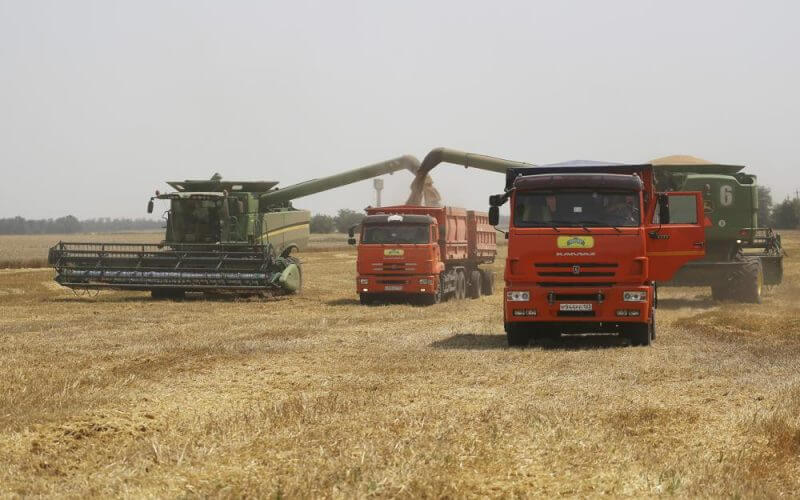Russia’s war in Ukraine could mean changes for Ed Kessel’s farm along a quiet stretch of western North Dakota.
Worldwide, farmers like Kessel are weighing whether to change their planting patterns and grow more wheat this spring as the war has choked off or thrown into question grain supplies from a region known as “the breadbasket of the world.”
Ukraine and Russia account for a third of global wheat and barley exports, which countries in the Middle East, Asia and Africa rely on to feed millions of people who subsist on subsidized bread and bargain noodles. They are also top exporters of other grains and sunflower seed oil used for cooking and food processing.
Kessel said he may plant some more wheat and ride the tide of high prices that have spiked by a third since the invasion, helping offset losses from drought and the increasing cost of fuel, but not a lot more.
“Honestly, it probably will help us plant a few more wheat acres. We’ll put a few more acres into wheat and a few more into sunflowers,” said Kessel, also first vice president of the North Dakota Grain Growers Association.
Major grain producers like the United States, Canada, France, Australia and Argentina are being closely watched to see if they can quickly ramp up production to fill in the gaps from lost Ukrainian and Russian supplies. But farmers are facing the prospect of another year of drought, climbing fuel and fertilizer costs, and supply chain disruptions from the COVID-19 pandemic. Major producers also are hamstrung by factors like legal limits on exports and farming patterns.
That means uncertainty for countries like Egypt, Lebanon, Pakistan, Iran, Ethiopia and others that cannot grow enough wheat, barley, corn or other grains to meet their needs. The war has raised the specter of food shortages and political instability in countries that rely on affordable grain imports.
Any extra grain exports from anywhere in the world “will likely only partially offset lower Black Sea shipments over the remainder of the current season,” the International Grains Council said in its March report.
About half of the grain the World Food Program buys to feed 125 million people worldwide comes from Ukraine. The double blow of rising food prices and depressed wheat exports from the war is a recipe for “catastrophe not just in Ukraine, but potentially globally,” the head of the U.N. food assistance agency warned.










